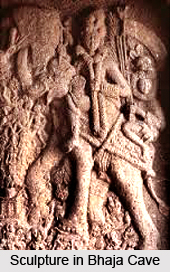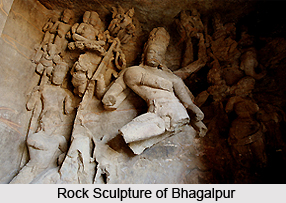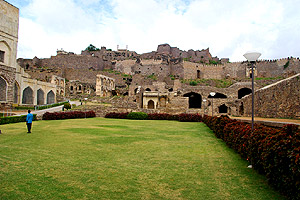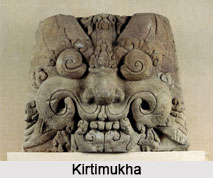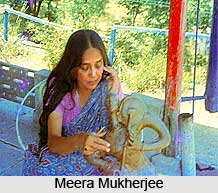 Meera Mukherjee was born in Kolkata in the year 1923 into a progressive family. At the age of 14 she joined the art classes run by the Indian Society of Oriental Art and studied there till 1941. Later she received a diploma in painting, graphics and sculpture from the Delhi Polytechnic. She was trained singer and was an artiste in the All India Radio. She had learned painting too but she found her forte in making bronze sculpture and carved a name for herself in this field.
Meera Mukherjee was born in Kolkata in the year 1923 into a progressive family. At the age of 14 she joined the art classes run by the Indian Society of Oriental Art and studied there till 1941. Later she received a diploma in painting, graphics and sculpture from the Delhi Polytechnic. She was trained singer and was an artiste in the All India Radio. She had learned painting too but she found her forte in making bronze sculpture and carved a name for herself in this field.
Subsequently she had worked under the noted Indonesian painter Effendi who was living and working in Shantiniketan. In 1953 she went to Germany to study painting in Munich. Her tutelage in Germany under Tony Stadler had greatly influenced her. He taught her to sculpt in bronze that imbibed in her the sense of importance of creativity and freedom of expression. She switched to sculpture after one term. She returned to India in 1956 and taught art for the next four years in a couple of schools. She has been researching on folk metal casting techniques and the casting techniques of classical Indian sculptures from 1960 onwards.
For her sculptures she used the lost wax process. She was deeply influenced by the Dhokra sculptors of Bastar in Madhya Pradesh. They arranged wax threads over the core wax before covering the wax model with two layers of clay. The first layer was in fine clay while the other was coarse and fired hard. The cast bronze would then have a rich and ornamental surface of curves, spirals lines of bronze threads. Meera spent many years staying with them and acquired the basic knowledge of their technique which she put to use in a creative way in her sculptures.
She perfected a technique in bronze that was her own. She evolved a unique iconography too. Many of her works show the use of Bengali calligraphy on the surface. Her work documents the life of the common people - fishermen, weavers, women stitching Kantha, commuters in a crowded bus, laborers laying cables and carrying mud. Many of her sculptures are related to music and dance. The sense of movement is seen in her sculptures where a river is visualized as the universe. Celebration of humanism and a yearning for reaching beyond the ordinary and rejoicing in freedom and liberation are the elements that mark the spirit of Mukherjee`s work.
She also spent her two years in Mylapore; Chennai watching and recording the traditional bronze icon makers helped her in the process of modeling the figures and finishing the works. The artisans continued the tradition of Chola Bronzes and made the images of gods and goddesses and lamps. She also benefited from the lyrical style of the Bronzes of Nepal and West Bengal.
Her sculptures combined the vigour and vitality of tribal art with the richness of form and magnificence of the Hindu classical sculptures of the deities.
